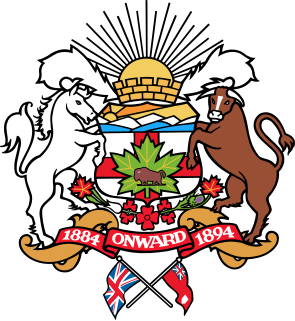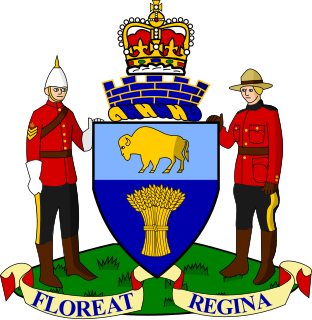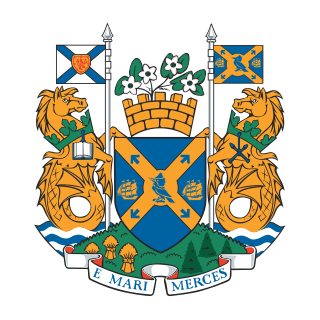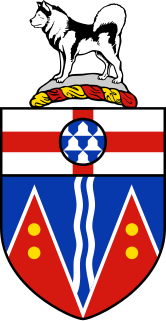 W
WClaire Boudreau, was a Canadian historian, genealogist, and officer of arms. She served as a herald in the Canadian Heraldic Authority from 17 March 1997 in the office of Saguenay Herald and later as Saint-Laurent Herald, to which office she succeeded on the retirement of Auguste Vachon, and then Deputy Chief Herald from 1 December 2005 until 16 June 2007, when she was made the second Chief Herald of Canada following the retirement of Robert Watt. She was also a nationally and internationally recognized scholar in heraldic studies. She was the author of many articles and publications. She was the principal designer and administrator of the authority's pioneering online Public Register of Arms, Flags and Badges of Canada, which was unveiled in July 2005. She was made an Academician of the Académie Internationale d'Héraldique in 2000. On May 20, 2020, Boudreau was appointed Margaree-Chéticamp herald emeritus and succeeded as Chief Herald of Canada by Samy Khalid.
 W
WD'Arcy Jonathan Dacre Boulton, is a Canadian historian, armorist and heraldic author.
 W
WChief Herald of Canada is the title held by the head of the Canadian Heraldic Authority. The Chief Herald of Canada directs the operations of the Canadian Heraldic Authority and makes the grants of arms. There are exceptions to this, such as certain grants made directly by the Governor General. The position has been held by Samy Khalid since 20 May 2020.
 W
WThe coat of arms of Abbotsford, British Columbia, was granted by the Canadian Heraldic Authority on 25 October 1995. The grant included the full coat of arms as well as a flag and a badge, both derived from the arms.
 W
WThe coat of arms of Barrie was granted by the College of Arms on 1 March 1977. The grant included the full coat of arms as well as a flag and a badge, both derived from the arms. The city registered the arms with the Canadian Heraldic Authority on 20 January 2005.
 W
WThe coat of arms of Burnaby was granted originally to the Corporation of the District of Burnaby by the Canadian Heraldic Authority in 1991, and then reconfirmed for the City of Burnaby in 2005 as the Corporation's successor. The grant included the full coat of arms as well as a flag and a badge, both derived from the arms.
 W
WThe coat of arms of Calgary, Alberta, was adopted in 1902. The arms existed only in black and white until 1984, when an alderman asked the City to develop it in full colour.
 W
WThe coat of arms of Charlottetown is the full armorial achievement as used by the municipal government as an official symbol.
 W
WThe coat of arms of Edmonton was granted on 28 October 1994.
 W
WThe arms of the City of New Westminster, in British Columbia, Canada, were adopted by city council in 1860, the year when the city was incorporated, and formally granted to the city by the Canadian Heraldic Authority in 1994.
 W
WThe coat of arms of Quebec CityCrest: A mural crown, symbolizing the city, as well as Quebec City's fortified walls. Shield: Chief: Two gold keys on a red background, one symbolizing Québec as the capital of New France, the second one representing the capital of the province of Québec; the keys are surmounted by a maple leaf, a symbol for Canada. Shield body: A ship representing Samuel de Champlain's Don de Dieu with full sails. The wavy ribbons represent the Saint Lawrence River. Scroll: The city motto "Don de Dieu feray valoir" and is a reference to Champlain's ship the Don de DieuGift of God). Colours: Gold (Or): for strength, faith, justice, wealth Red (Gules): for strength, power, determination Blue (Azure): sovereignty, majesty, serenity
 W
WThe coat of arms of Regina, Saskatchewan is the full armorial achievement as used by the municipal government as an official symbol.
 W
WThe coat of arms of Halifax, Nova Scotia is the full armorial achievement as used by the municipal government as an official symbol.
 W
WThe original coat of arms of the Northwest Territories was granted by a Royal Warrant of Queen Elizabeth II on 24 February 1956. The shield is also featured on the territorial flag. The coat of arms was designed by well known Canadian heraldry expert Alan Beddoe in the early 1950s.
 W
WThe coat of arms of Winnipeg is the full armorial achievement as used by the municipal government as an official symbol. This arms was granted in 1972 by the College of Arms in England and replaced an early coat of arms. Two versions are used, the full coat of arms, and a lesser version called the "City Crest".
 W
WThe coat of arms of Yukon is the heraldic symbol representing the Canadian territory of Yukon. The arms was commissioned by the federal Department of Indian Affairs and Northern Development and designed by well-known heraldry expert Alan Beddoe in the early 1950s. It was officially approved by Queen Elizabeth II in 1956.
 W
WIn heraldry, copper is the tincture of metallic copper. Copper has been introduced in Canadian heraldry. It is considered a metal along with Argent (silver) and Or (gold) and should be depicted as bright, new copper metal.
 W
WCoppermine Herald of Arms is the title of one of the officers of arms at the Canadian Heraldic Authority in Ottawa. The office was created in 2003 and Coppermine Herald is the assistant artist of the Authority. Like the other heralds at the Authority, the name is derived from the Canadian river. The design of the badge of office of Coppermine Herald of Arms was assigned on 15 June 2005. The ulu in the badge is a traditional Inuit knife that has existed for over 4000 years. It honours the northern people and land. Its copper colour refers to the title Coppermine Herald. Since the creation of the office, it has been held by Catherine Fitzpatrick.
 W
WThe Herald Chancellor is an officer at the Canadian Heraldic Authority. The office is always filled by the Secretary to the Governor General. The Herald Chancellor is responsible for the administration of the entire vice-regal office. In some ways, the position is analogous to the Earl Marshal in England, as it is the Herald Chancellor who issues the warrants permitting the Chief Herald of Canada to make grants of arms. The Herald Chancellor also signs each completed grant document, along with the Chief Herald.